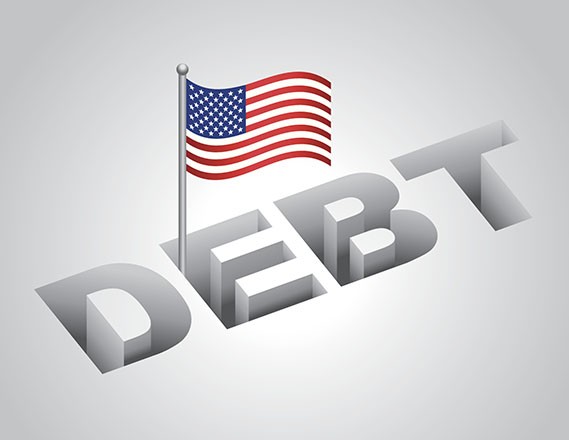All About Bonds Tactical Tips For Bond Investors
Post on: 16 Июль, 2015 No Comment

All About Bonds is a blog about, surprise. bonds. All kinds of fixed income and hybrid securities come across our desks here at J W Korth/Shop4Bonds, and we like to talk about them. We expect this to include our latest thoughts on the market, new and interesting instruments, investment strategies, market changes, and more. To jump in and trade, visit www.shop4bonds.com.
Tuesday, June 22, 2010
Tactical Tips For Bond Investors
Tactical Tips For Bond Investors by Eric Petroff
Fixed-income markets are an extremely dynamic and fascinating aspect of our investment universe, not to mention one of the more predictable ways to tactically profit from long-term market trends. The interest rates among various bonds are constantly in a state of flux, providing numerous opportunities for astute investors. Having the necessary knowledge to recognize a good deal when you see it is key to successful, opportunistic investing in fixed-income markets. As such, this article will examine the key components of interest rates, what factors affect them and how to apply this knowledge to make tactical fixed-income investments.
Basic Components of Interest Rates
The basics components for bond interest rates are simple and can be calculated with a very small amount of research. Essentially, all you need to do is compare the rates of U.S. Treasury Inflation Protected Securities (TIPS), U.S. Treasury bonds and non-government bonds. (For background reading, see Bond Market Pricing Conventions.)
Real Risk-Free Rate — This is a base rate of return for any given period and can be found by looking at yields for U.S. TIPS, which are inflation protected. Therefore, their yields are based on real returns. (For related reading, see Treasury Inflation Protected Securities.)
Expected Inflation — This is the second component of interest rates and can be easily found by subtracting the yield of a TIP from a normal (or nominal) U.S. Treasury bond. The result of this calculation is what the market expects the annualized inflation to be over any given time period.
Credit Risk Premium — This is the final component of interest rates and is the premium that investors require to take credit risk, or the chance that they won’t be repaid. This premium only applies to bonds that are not backed by the U.S. government and can be found by subtracting the yield of a U.S. Treasury bond from a U.S. corporate or mortgage-backed bond. Keep in mind that credit premiums vary widely depending on the credit quality of the issuer and the instrument in question. The example below is purely for illustrative purposes. (For related reading, see What Is A Corporate Credit Rating?)
Bond Type Market Interest Rate Implied Rate/Premium
U.S. 10-Year TIP 2% 2% (risk-free rate)
U.S. 10-Year Nominal Bond 4.5% 2.5% (implied rate of inflation)
U.S. 10-Year ‘AAA’-Rated Corporate Bond 6% 1.5% (implied credit premium)
Total Interest Rate — 6%
Where to Focus Your Efforts
In order to maximize your chances of success in fixed-income investing, it is best to decide where to focus your tactical efforts; risk-free rates, expected inflation, or credit premiums. Keep in mind that although risk-free rates do vary quite a bit over time, such changes are very difficult to predict. Therefore, it’s not likely a good use of effort to engage in market timing activities with respect to real interest rates.
Another area in which you can focus your efforts is being tactical with respect to expected rates of inflation. For example, if you believe expected rates of inflation will fall, you would buy nominal bonds and reap the rewards of a decrease in total interest rates as those expectations fell. As with risk-free rates, market timing the changes in inflationary expectations is extremely difficult. Moreover, the absolute amounts of the changes in real interest rates and inflation are typically modest in nature, leaving small rewards even if you are correct (assuming no leverage is involved). (For related reading, see What You Should Know About Inflation.)
Where you really want to focus your attention however, is on credit risk premiums, which are substantially more volatile than the aforementioned factors. This is because fluctuations in credit premiums are generally tied to economic cycles. Moreover, the absolute numbers involved in credit premiums are much larger than those associated with real interest rates or inflationary expectations. So from a tactical standpoint, this is where you should focus your efforts. Therefore, you need to understand what factors affect credit risk.
Credit Risk Basics

From a big-picture standpoint, credit risk premiums are very simple to understand. Keep in mind that credit risk can take a lot of forms. It could be corporate debt of all kinds as well as mortgage-backed debt. Each type of credit risk has an associated risk premium. For example, ‘AAA’-rated corporate bonds will have a lower credit risk premium than say, a junk bond; the same applies to mortgage-backed bonds of varying quality.
What is important to understand is that credit risk premiums fluctuate along with the economy. This means that if the economy is strong, companies are more likely to make their debt payments, and the market correspondingly assigns a lower credit risk premium during such times. Conversely, if the economy enters a recession, corporations (and other debtors) are less likely to make their payments. As a result, the market assigns a higher credit risk premium during these times. As such, the cycle of risk premiums closely tracks the health of the broad economy, or at least the area of the market in which the debtor operates (mortgages, corporations, municipalities, etc.).
Profiting Tactically
How can an investor profit from these cycles? It’s relatively simple for those who can employ the appropriate level of patience and avoid the herd mentality. This is because it is the herd mentality that creates opportunity. Profits are made by avoiding credit risk when the compensation is poor (i.e. low premiums) during times of strong economic activity. You want to avoid investing during these times because economic cycles are inevitable, and you will surely see an economic downturn, which will lead to higher credit premiums (or higher interest rates). This leads to losses — as rates go up, bond prices go down. Treasury bonds make a fine investment at the peaks of economic cycles because the foregone credit premium is very low and, when things turn sour, these bonds tend to perform very well. (For related reading, check out Get Acquainted With The Bond Price/Yield Duo.)
Conversely, you want to embrace credit risk during uncertain economic times when most people are avoiding these types of investments, typically during times of recession. In this instance, the goal is to invest when credit risk premiums are high and watch them fall as the economy recovers — as rates go down, prices go up. Let’s take a look at a concrete example.
The chart below tracks the credit spread between U.S. high-yield bonds and U.S. Treasury bonds over 20 years (1987-2007). As you can see in Figure 1, these spreads fluctuate dramatically and have reached double-digit levels during the last two recessions (highlighted bars), or when most investors wanted to avoid taking credit risk. For example, if you chose to invest in high-yield bonds when the credit premium was high (December 2002), and held that investment until the credit premium dropped as the economy recovered (December 2006), you would have earned an 8.4% annualized return, versus only 3.7% for holding the Lehman Aggregate Bond Index for the same period. Earning nearly an extra 5% annualized, over a three-year period is a handsome additional return for a fixed-income investment.
Figure 1: credit spread between high-yield bonds and Treasury bonds 1997-2007
Proceed With Patience, Caution
Tactical fixed-income investing is not only possible, but potentially profitable as well. But, don’t get too excited and start trading bonds just yet. Keep in mind that these sorts of tactical opportunities do not always present themselves on a daily, monthly, or even annual basis. Furthermore, successfully profiting in the manner described above is a function of patience and the willingness to move against the herd by avoiding credit risk when it’s popular and embracing it when it’s not.
Finally, investors should always take a long-term approach toward fixed-income investing. It could take years for a tactical strategy to come to fruition, which could leave impatient investors wishing they were in another asset class altogether.














